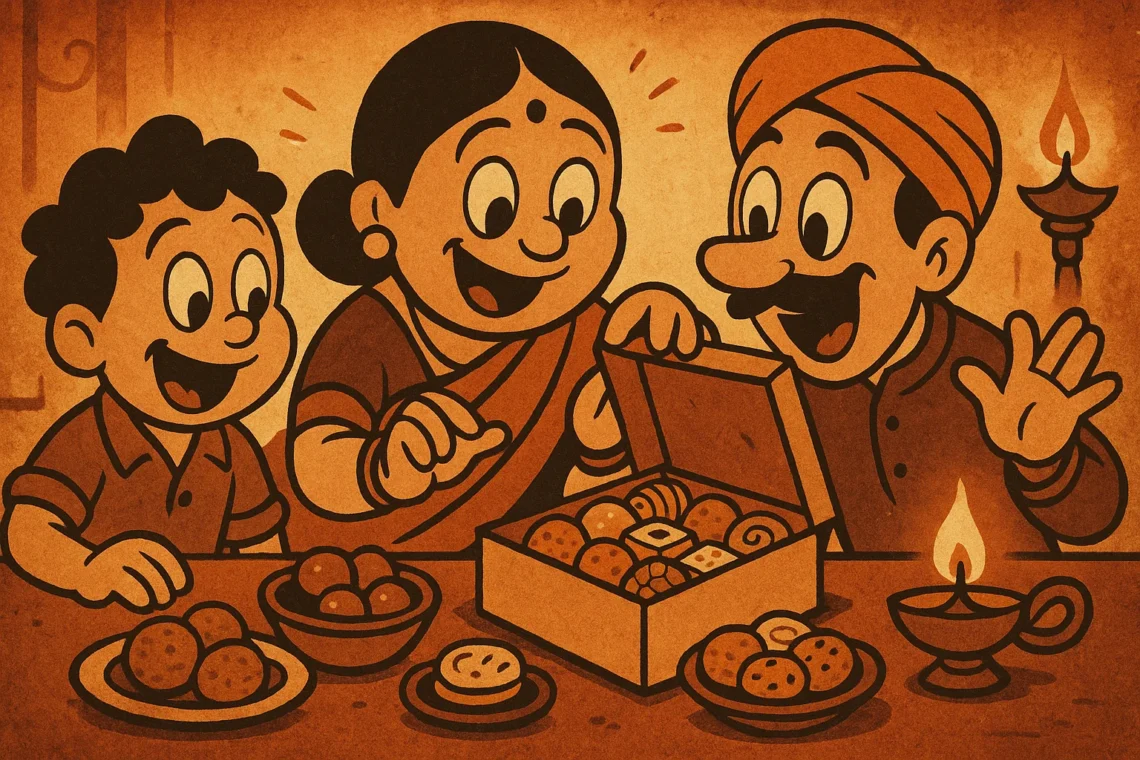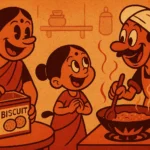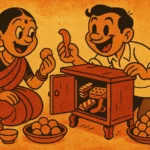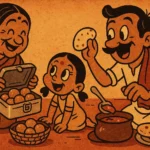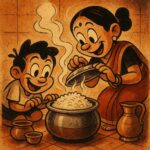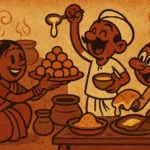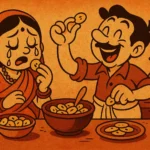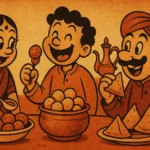There are Diwali sweets meant for guests—arranged neatly on trays, offered with tea, replenished twice a day for maximum visual appeal. And then there are the real Diwali sweets—the ones hidden at the back of a cupboard, in an old biscuit tin or a floral mithai box that’s been repurposed for the fifth year running. The ones that no one talks about openly, but everyone knows exist. That’s the box. The secret stash. The treasure chest of laddoos and barfis too good to share. Every family has one.
In our home, it was kept in the crockery cabinet, behind the tall stack of plates that only came out during weddings. You had to move a few saucers and a soup bowl no one had used since the ‘90s just to see it. It was camouflaged, dusty, and always slightly greasy around the edges. And that’s how you knew the good stuff was inside.
The Hierarchy of Sweets
Not all Diwali sweets were created equal. The store-bought kaju katli, though pretty, was always out in the open. Soan papdi made its predictable rounds, more wrapper than sweet. But the homemade coconut laddoos, the perfectly dense besan barfi, the rich, ghee-laced mohanthal—those went into the box. The sweets that came from aunties who knew how to stir patience into sugar. From neighbors who still made badam halwa the slow way. From relatives who sent mithai wrapped in stories and long-distance affection.
These weren’t just sweets. They were heritage. And heritage needed safeguarding. Which is why the box was both vault and boundary. You didn’t access it casually. You needed permission, or at least the tact to sneak in when no one was watching. And even then, you had to play the game—take only one piece, rearrange the rest so it looked untouched, and wipe your fingers before touching anything else.
The Rules of Engagement
There were silent rules around the box. You never opened it in front of guests. You never finished the last piece. And you definitely didn’t admit it existed. If a cousin asked, “Any more laddoos?” the answer was always a vague shrug. Because once the box became public knowledge, it was over. The charm, the secrecy, the joy of hoarding—a quiet pleasure passed down like family recipes—would vanish into shared plates and polite generosity.
It was never about being greedy. It was about preserving joy. The kind of joy that comes from peeling back parchment paper to find a lone square of chocolate barfi nestled in the corner. Or biting into a chunk of dry fruit halwa you thought was finished. That box turned sweet-eating into a treasure hunt. Every bite felt earned. Stolen. Special.
The Late-Night Ritual
Post-Diwali, when the guests were gone, the diyas dimmed, and the house settled into its quiet clutter of leftover rangoli and used gift wrappers, the box would come out. Usually late at night. Someone would bring it to the table with the reverence of a family heirloom. The tin would creak open, and suddenly, it didn’t matter that the sweets were a little dry, that the silver foil had stuck to the lid, that the ghee had seeped into the edges. They were ours. Shared in pajamas and laughter. No posing. No Instagram. Just warm chai, cool tiles, and sticky fingers.
Imported Nostalgia
Now, in my kitchen in Austin, I still make a box. Not as full, not as fragrant, but enough. I wrap a few laddoos in parchment, cut barfi into uneven squares, and store them in an old tin that once held cookies from Costco. It’s not the same, but it serves the same purpose. A secret indulgence. A flavor of home. A link to Diwalis past.
When friends come over, I serve the store-bought stuff. But after they leave, I make chai, pull out the tin from its hiding spot, and eat a piece of motichoor laddoo in silence. And for a moment, I’m back in that childhood kitchen—waiting for everyone to fall asleep so I can sneak just one more bite from the box we pretended didn’t exist.
Because the best Diwali sweets aren’t the ones displayed on silver trays. They’re the ones tucked away. Hidden. Hoarded. Loved in secret. The ones that taste better not just because of what’s in them—but because of everything that surrounds them.
Born in Mumbai, now stir-frying feelings in Texas. Writes about food, memory, and the messy magic in between — mostly to stay hungry, sometimes just to stay sane.

